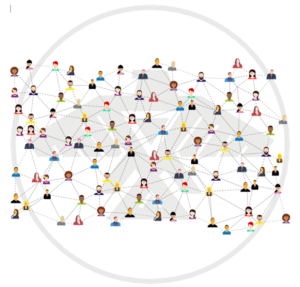Opinion: Broadband internet and Economic Development
 Submitted by the Anishinabek Nation Economic Development Department
Submitted by the Anishinabek Nation Economic Development Department
Do you remember the days when we were first introduced to the online information highway? Do you remember sitting at your desktop computer that covered your entire desk, logging into your internet service provider, and listening to that annoying connection process? It was a whole new experience; a slow, tedious, and aggravating one at times, but a great new tool nonetheless.
Today, it seems that everything we use requires an internet connection – even our refrigerators – and many of us don’t realize the economic driver that Broadband Internet and technology in our homes has become. Did you ever think that your fridge would use a camera to determine that you were out of milk, eggs, and butter, and then order the items from the grocery store for you? That leaves you more time to shop online for other things that you may want or need.
Many of us take for granted that we can simply turn on our computer, tablet, phone, or watch and have instant access to high-speed internet. Many people are not aware that there are many places in our country and even within the Anishinabek Territory that still do not have reliable and affordable access to broadband internet. If you browse through the National Internet Broadband Service Availability Map that is maintained by the Government of Canada, you will be able to see how much territory still does not have broadband internet access.
Access to broadband internet has become so crucial in our daily lives that the Canadian Radio-Television and Telecommunications Commission has declared broadband internet a basic service and that every Canadian is entitled to access. As a result, the government is starting to spend hundreds of millions of dollars to support the development of infrastructure to support universal access to high-speed internet.
Some First Nations have worked together to bring broadband internet access to their communities. This collaboration on the planning, development and construction phases of connecting a community result in not only access to reliable access to broadband internet but helps drive economic inputs through employment and community financial investment and ownership of the infrastructure.
A great example of this type of initiative is the Kuh-ke-nah Network (K-Net), which is a consortium of First Nation communities that was initiated to improve broadband internet access in their communities as a means to improve access to health, education, employment, and other services over the internet. This consortium not only provides access, but they also own the infrastructure and network architecture that facilitate access to their communities. Community ownership and control over local architecture mean that each community can adapt broadband services to address their challenges and priorities.
Broadband backbone or network architecture construction can provide local economic stimulus in the short-term, but there is also the potential for long-term economic benefits through the provision of services or the sale of products to service providers. K-Net sells its products or services to support ongoing operational costs and to support the ongoing economic development plans of its member communities. K-Net also maintains a mandate to provide technical support, training, and capacity development in their communities to encourage the use of high-speed internet services that are available.
It is generally agreed that by improving access to broadband internet, there may be improvements in the socio-economic status of our community members and that access to affordable broadband internet in our communities will improve our quality of life by ensuring access to online health services, expanded education offerings, social services and employment or economic resources.
Another important factor would be the enhancement of the local economy through business development. Broadband internet access can increase the growth potential of local businesses by affording them access to markets outside of their own First Nation, where they can sell their products or services to the broader non-Indigenous market. This improvement could potentially lead to greater investment in the local community to support the needs of these growing businesses.
It is also important to mention that it is not just government and business owners who will benefit from broadband internet access, the average consumer will also benefit by having access to a greater number of options to purchase products from either local vendors who advertise on the internet or from those who sell on the internet. Either way, the average community member may be in a position to save on some purchases that will allow them to spend on other items not originally planned for.
Having broadband internet connectivity in our communities is more than just access to the internet. Access to broadband internet means that our budding filmmakers will be able to upload their videos for people to enjoy; it will give local businesses increased options to market and sell their products and services; it will improve community access to health and education services, and it will give the local government access to remote management services related to community infrastructure.
Broadband internet will be a catalyst to improve our local economy and our ability to participate in the ever-growing global economy and it can also be a tool that will facilitate positive change in the way that we manage our health, access education, manage our resources, and continue planning for our future.

